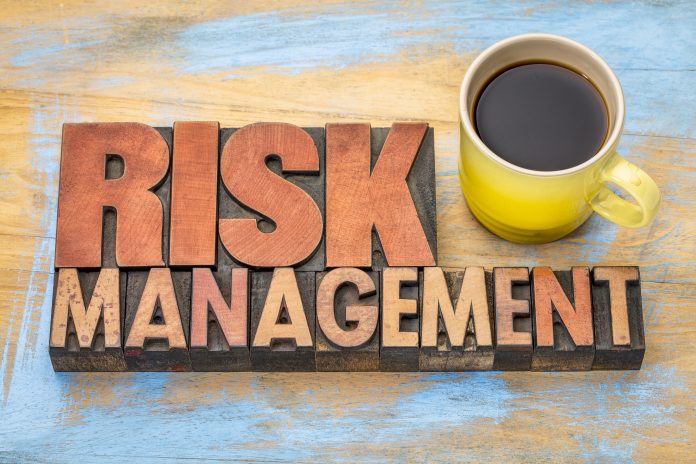Frank Malangone, senior director at Oracle Construction and Engineering looks at the importance of risk assessment in the construction industry – from supply chain issues, unpredictable weather and labour shortages, to severe cases such as global health and economic crises
Historically, the engineering and construction industry’s ad hoc approach to risk management often led to identifying these risks too late in the project lifecycle, especially as it relates to project schedules and delivery timelines.
According to the Project Management Institute’s 2020 Pulse of the Profession Survey, construction organisations waste an average of $127m for every $1bn spent on projects and programmes, due to poor project performance.
Construction organisations need to emphasise the development and use of comprehensive value delivery strategies that can adapt quickly to changing market conditions.
Organisations managing construction projects (or portfolios) are increasingly looking for ways to incorporate more robust risk management practices—at multiple programme levels—that minimise disruption to business processes.
At the same time, many are not sure where to begin. A few proven steps can set these organisations on the right path toward an effective construction project risk management strategy.
Taking a holistic viewpoint
It’s important to first undertake an assessment of your risk profile at both the project and programme levels. Projects can be defined as a one-off initiative, bound by distinct cost, resource, budget, and/or time-constraints, whereas programmes are a group of interconnected projects that complement and build on each other—often working toward a larger, long-term goal.
Some firms make the mistake of only managing risks at the project level, which leads to an incomplete picture of exposure—and performance. It’s important to implement a broader focus on assessing risk that elevates visibility to the programme level, allowing teams across projects to optimise resources and adjust plans to strive toward successful outcomes.
Five steps to better construction risk management
With that need in mind, here are five proven steps to developing a robust risk management strategy in construction scheduling:
Identify the risks
At the beginning of a programme or project, the management team should try to identify potential risks. Could bad weather or uncertain site conditions threaten to delay construction? Is there a risk that material costs significantly rise unexpectedly? Keep in mind that it is impossible to identify and manage every possible risk.
Therefore, the team should agree on those events most likely to occur and have the greatest impact. These are the factors that they will monitor and seek to manage.
Assess your exposure
After identifying the most likely and impactful risks, the team should determine the likelihood of each risk occurring, as well as impacts to costs and schedules. Risks should then be ranked on how likely they are to occur, and by the level of their impact. From here, teams should prioritise how they will manage specific risks with the help of Monte Carlo simulations and scenario planning tools, which allow users to create and run various what-if scenarios by changing key variables.
While Monte Carlo analysis can be conducted via a spreadsheet, this approach is not suited to manage large, complex projects with thousands of data points that can change frequently, including calendars, resources, and the relationships between them. It is also not suited to conducting risk analysis across far-reaching programmes. For these types of complex scenarios, it is best to use a true risk management application.
Determine a response strategy
Teams should plan the specific actions they will take to mitigate high-impact risks. Scenario planning technology plays an important role here to assess what-if scenarios and determine costs and benefits of each mitigation strategy.
While some risks can’t be avoided, such as building during unforeseen inclement weather conditions, this step can lessen the impact on the project by building in adequate schedule, labour, and supply chain contingencies.
Communicate for visibility
After assessing risks and defining mitigation strategies, the team should communicate this information to the project sponsor or owner. This demonstrates an effort to take a proactive approach to risk mitigation and allows contractors an opportunity to discuss the risks, mitigation strategies, and potential impact on the schedule and cost of the project with the project owner.
Monitor, adapt, and repeat
As risks continue to evolve, programme managers must build in regular assessments to update risks and their mitigation strategies as conditions change. With more information about each risk and the impact of various mitigation strategies, project managers can make more informed decisions about the best path forward.
For example, if there is a strong probability of a labour shortage in the near future, the team may determine that the cost of overtime needed to keep the project on schedule is less than penalties incurred if a project is not completed on time.
These same decisions can be made at the programme level, where a manager may decide to pause a specific project in the portfolio to allocate resources to another project that presents higher risk and cost impact.
While risks cannot be completely eliminated, a methodical and collaborative approach to forward-looking risk management is key to mitigating potential negative impacts.
Good risk management strategies require the integration of dynamic and diverse sets of information, including budget, cost, and schedule data, with technology and tools that provide high visibility and centralised data management. With this in mind, organisations managing construction projects will be well on their way to shoring up their risk management practices.
Frank Malangone
Senior director for product and industry strategy
Oracle Construction and Engineering














